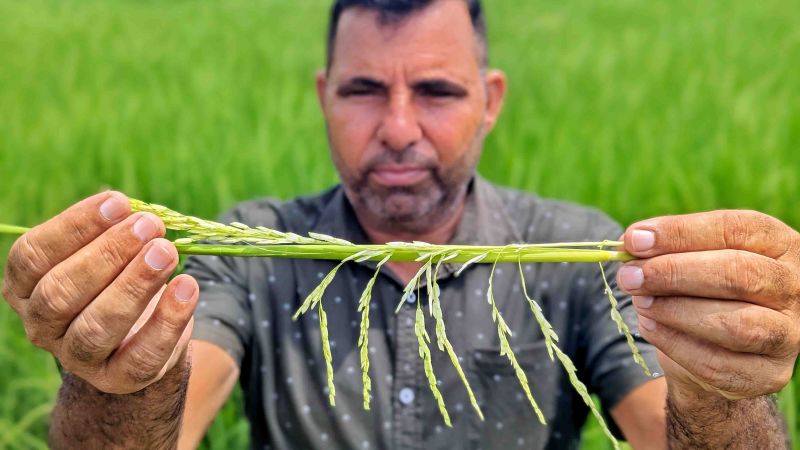Newly planted rice saplings have been underwater since July after torrential rain battered northern India, with landslides and flash floods sweeping through the region.
Last month, India, which is the world’s largest exporter of rice, announced a ban on exporting non-basmati white rice in a bid to calm rising prices at home and ensure food security. India then followed with more restrictions on its rice exports, including a 20% duty on exports of parboiled rice.
The move has triggered fears of global food inflation, hurt the livelihoods of some farmers and prompted several rice-dependent countries to seek urgent exemptions from the ban.


You can’t change your crops that quickly.
Also, rice is probably still plenty expensive enough.
In India, the benefits of higher prices is rarely passed to the farmers. middlemen/ brokers hoard prodcuts and make hay.
Rice is one of the few crops where the govt sets a Minimum Selling Price (MSP) and farmer prefer it knowing their crop will atleast get them some returns. for most of the agri products, there is no MSP, and farmers have no way of knowing whether the crop they’ve borrowed money to plant and have slaved to grow & reap will fetch them any money. When even returns are not assured, profits are a distant dream. The financial situation of farmers caused by inconsistent returns is so terrible that almost all farmers are deep in debt and since
the 1970s an estimated 30 Indian farmers have been killing themselves everyday due to debt.
The situation is so dire that as of 2018, the Indian government has not published data on farmer suicides since 2015.
https://en.wikipedia.org/wiki/Farmers’_suicides_in_India
@BrokenToY